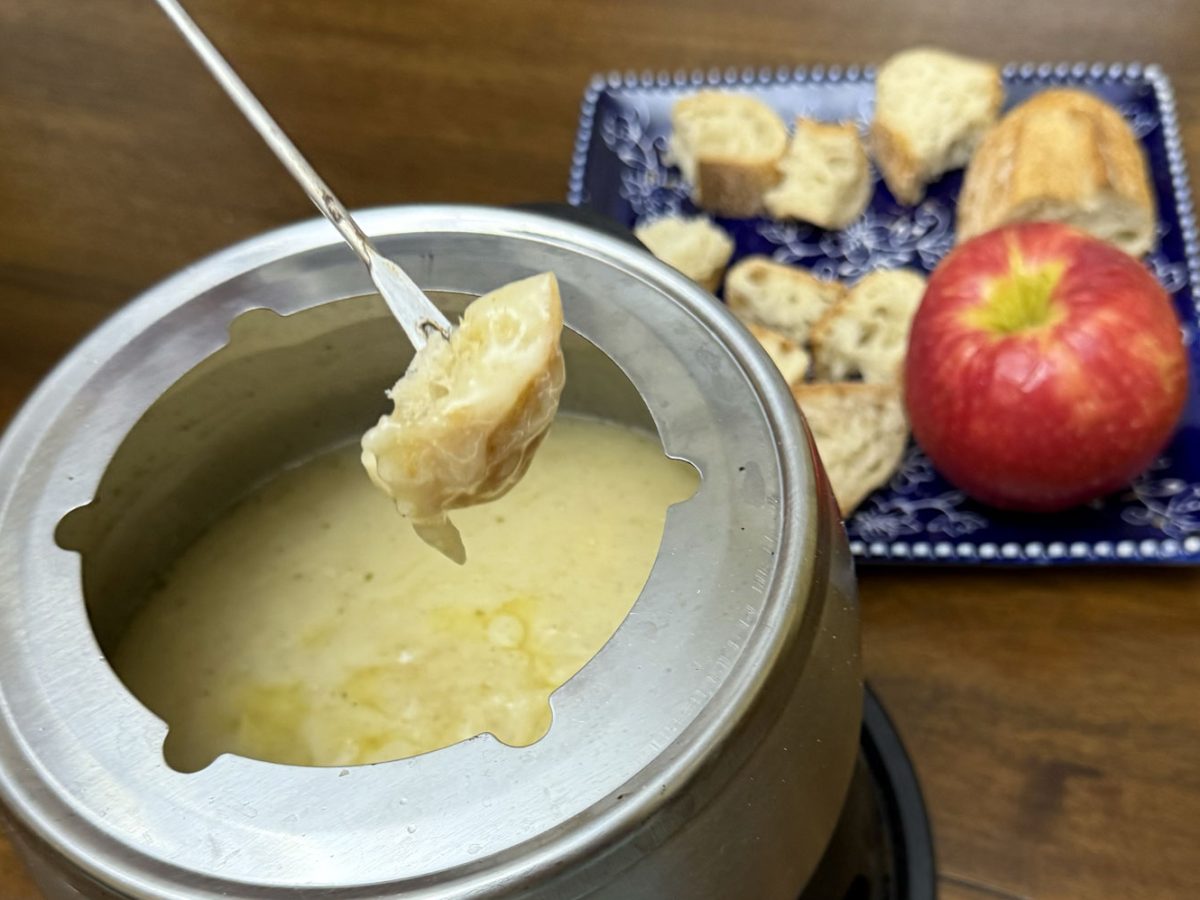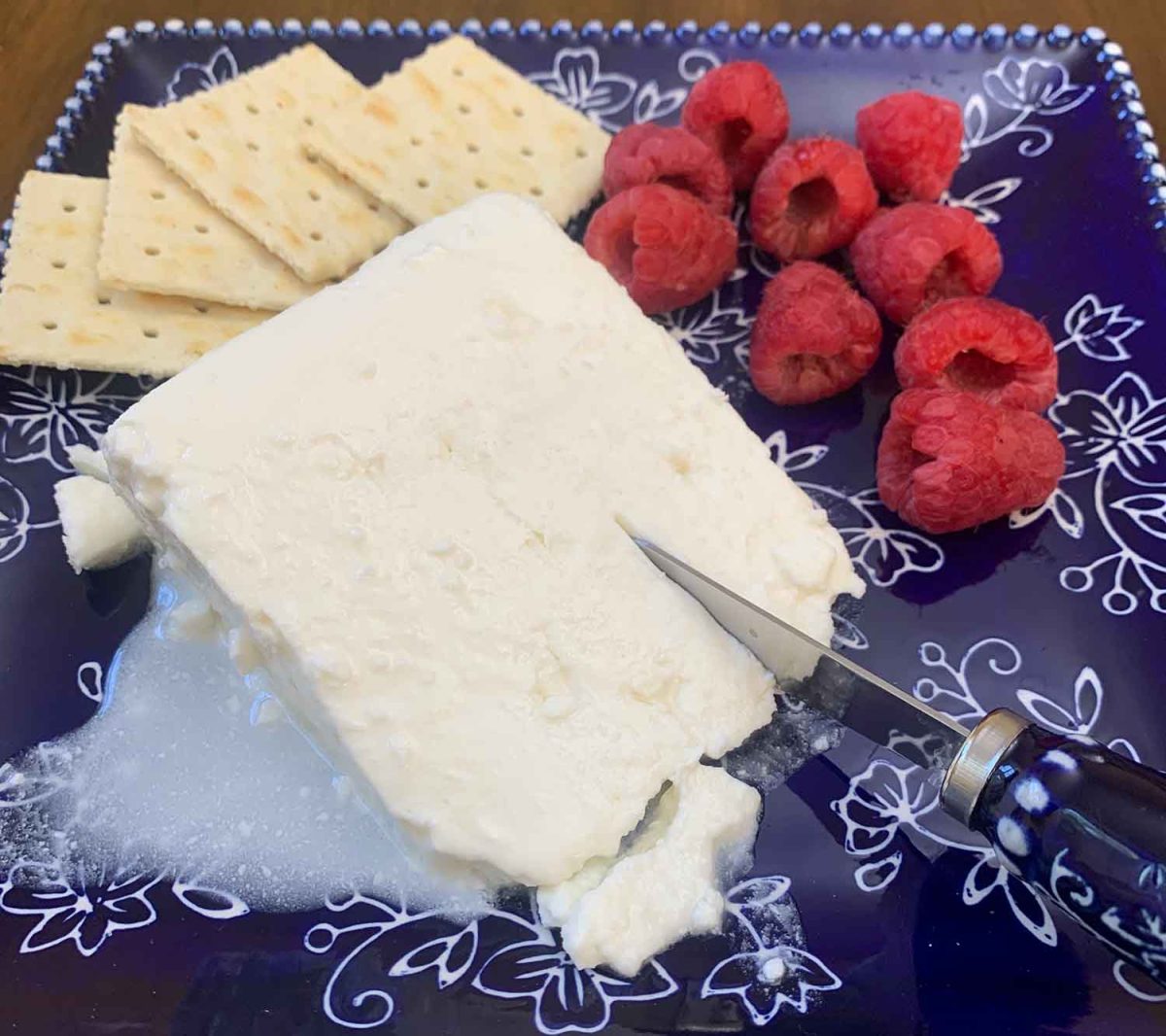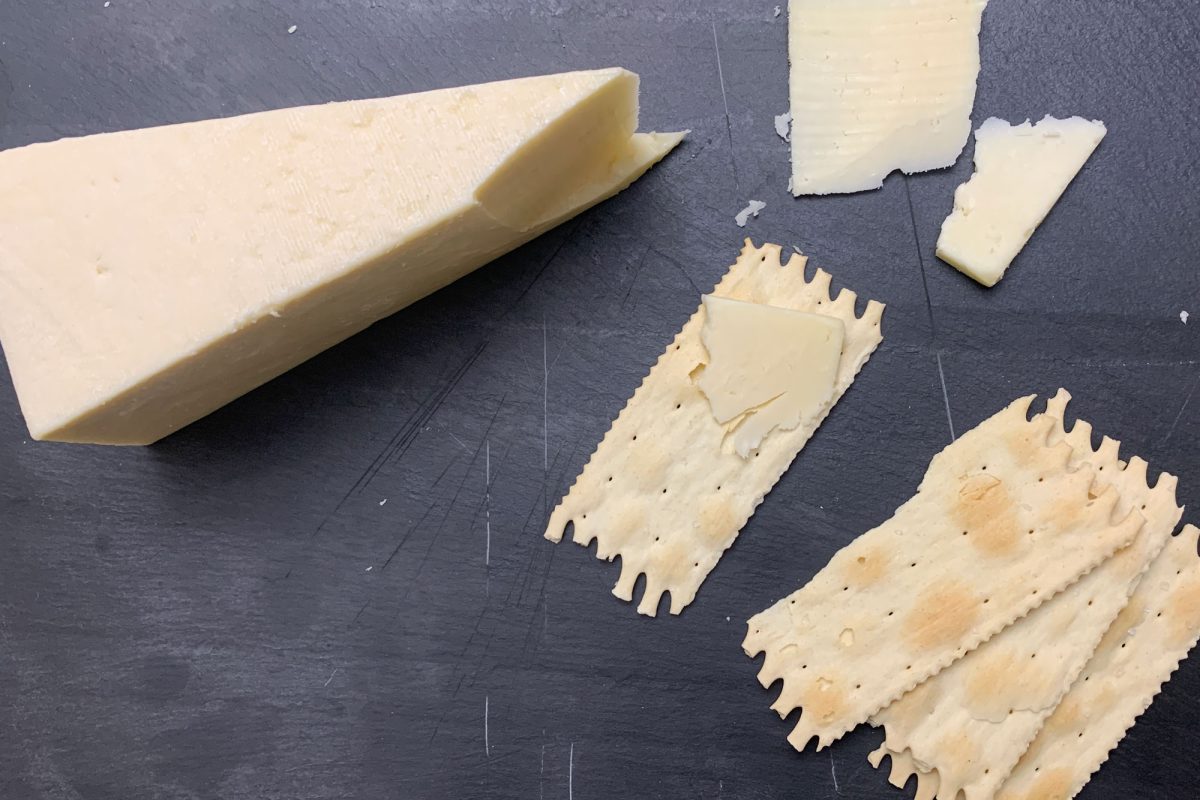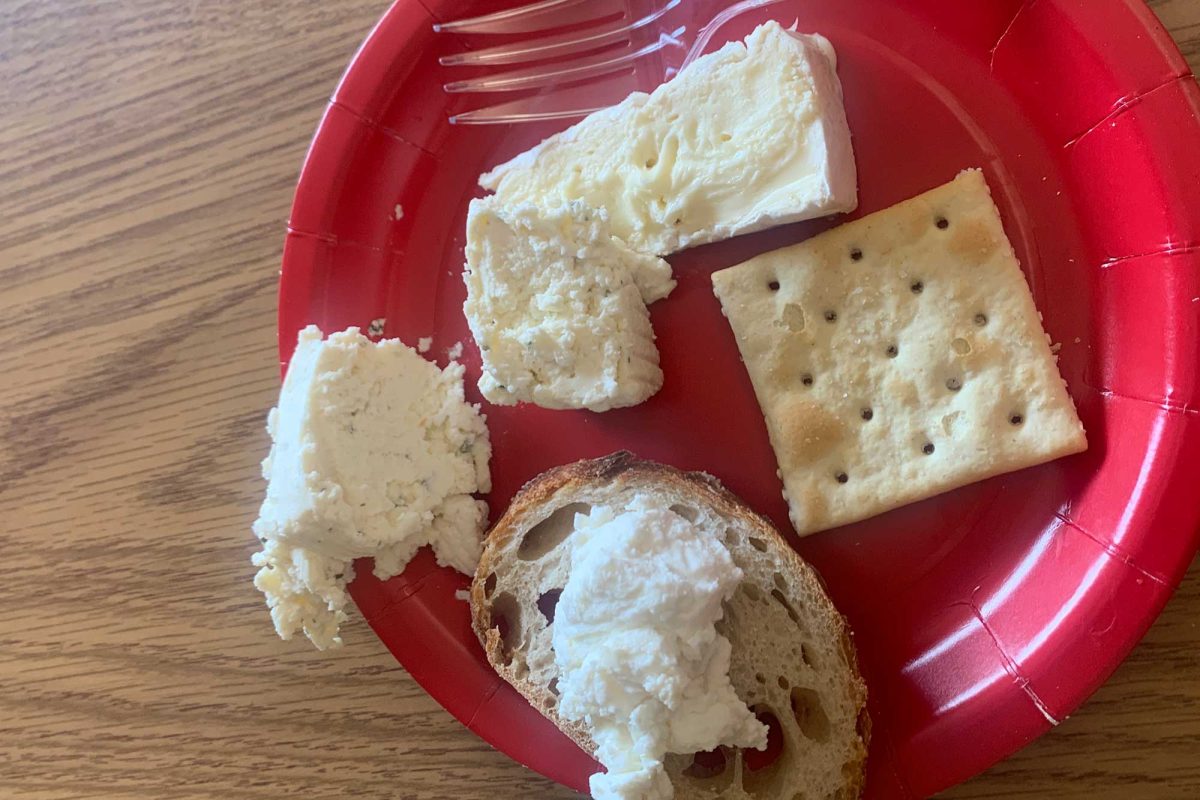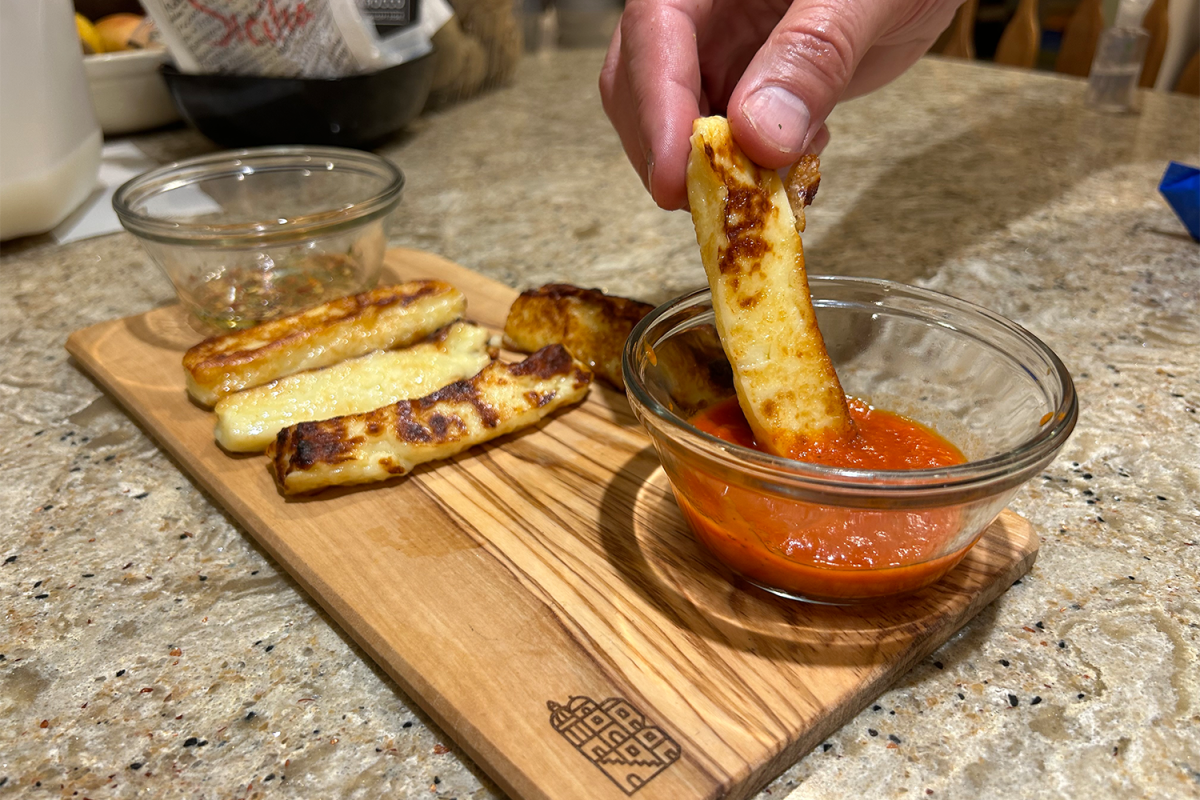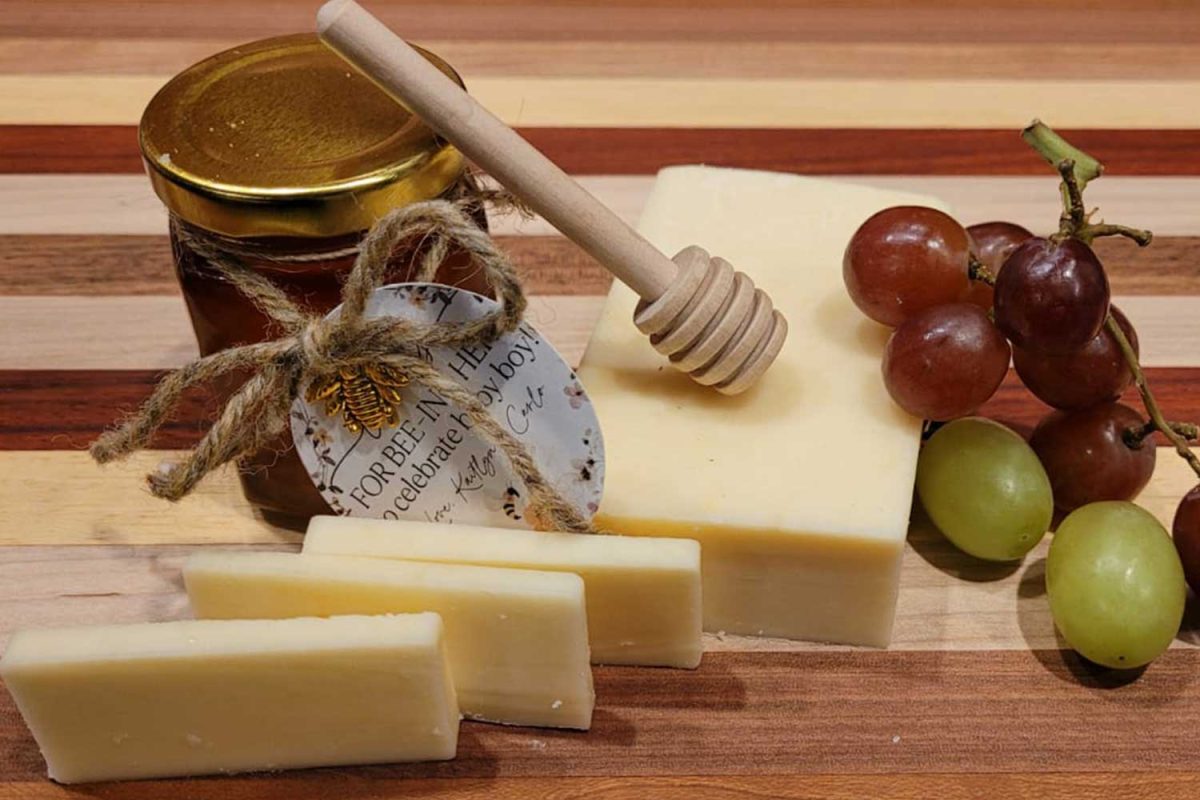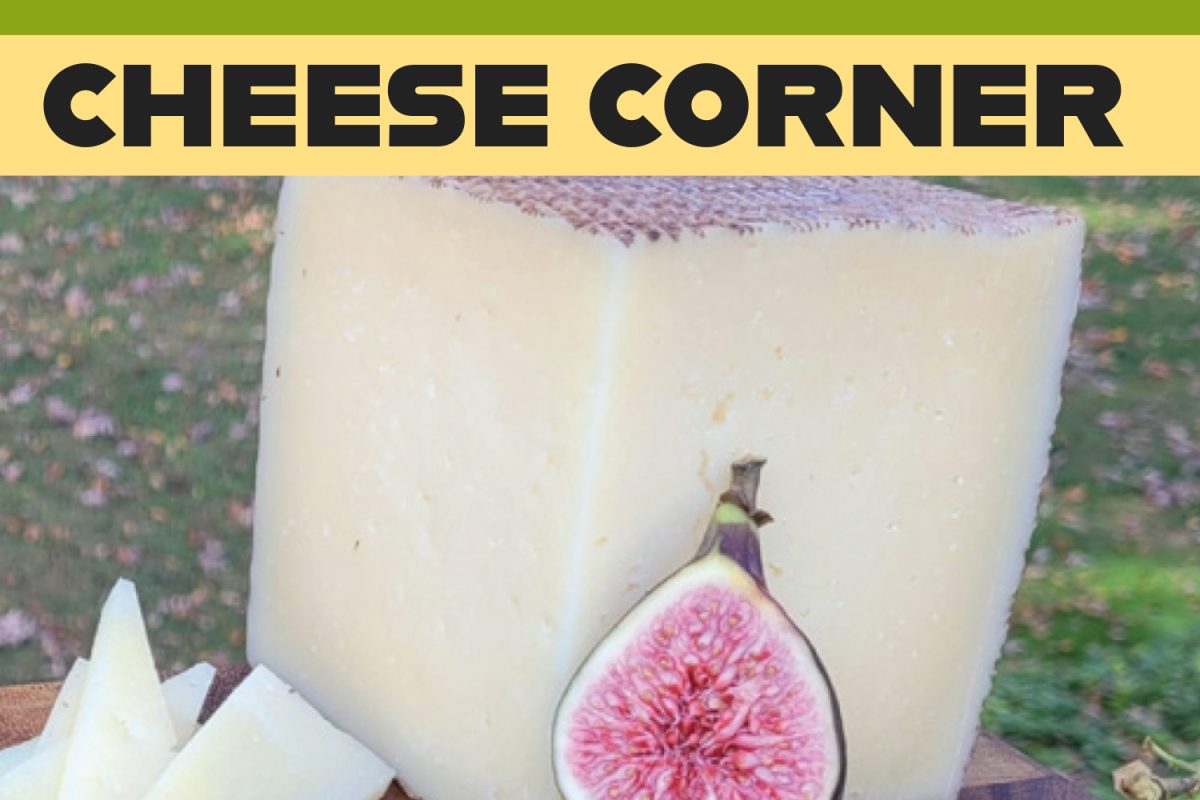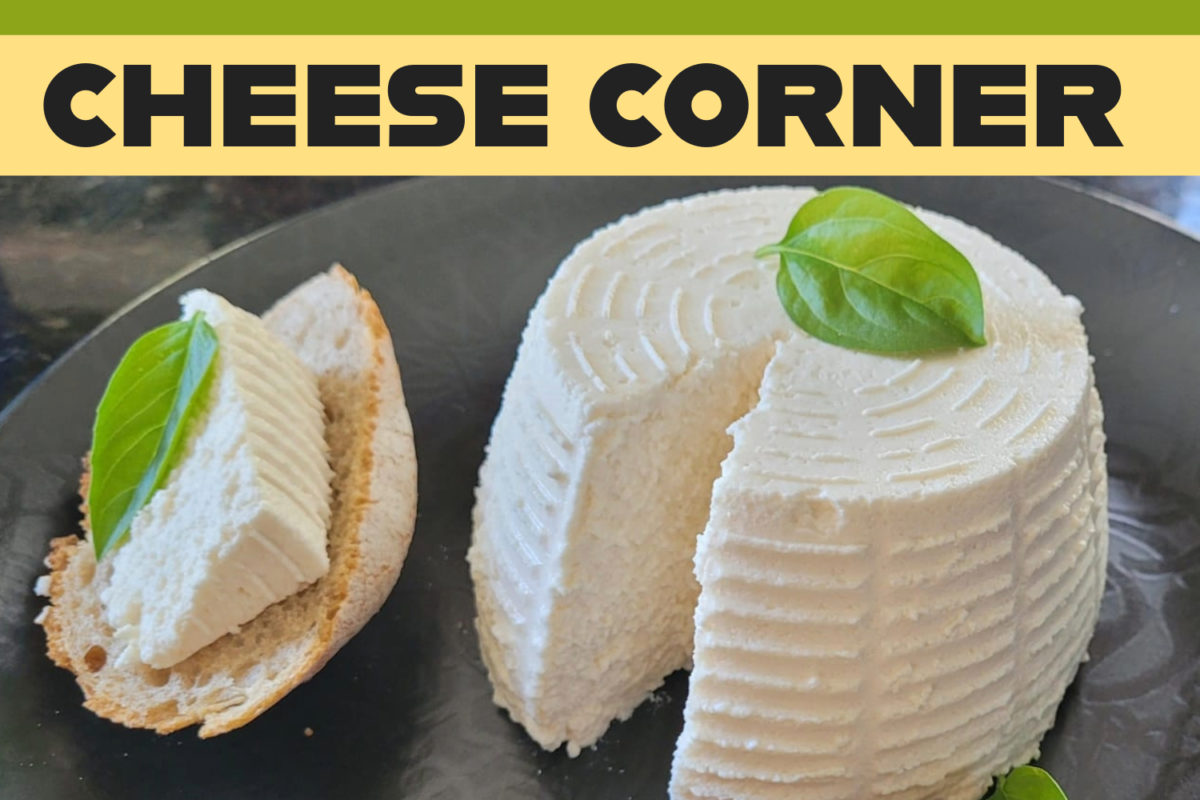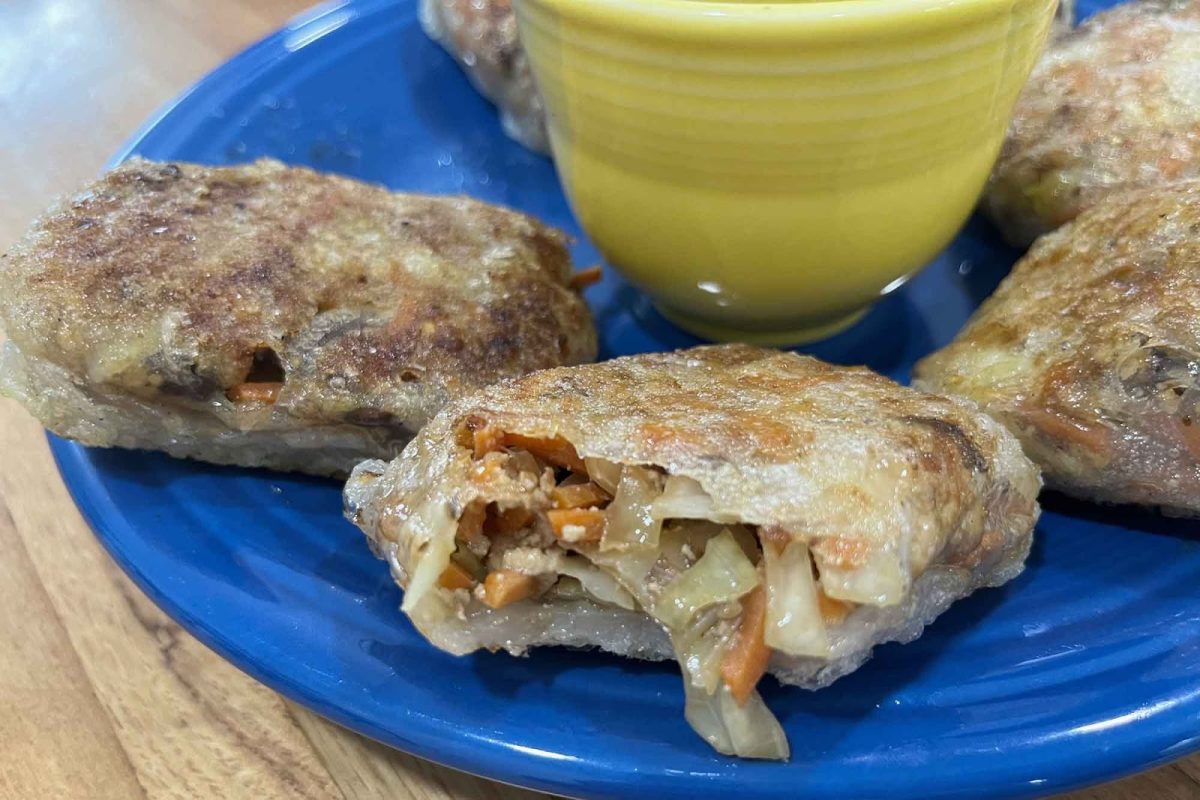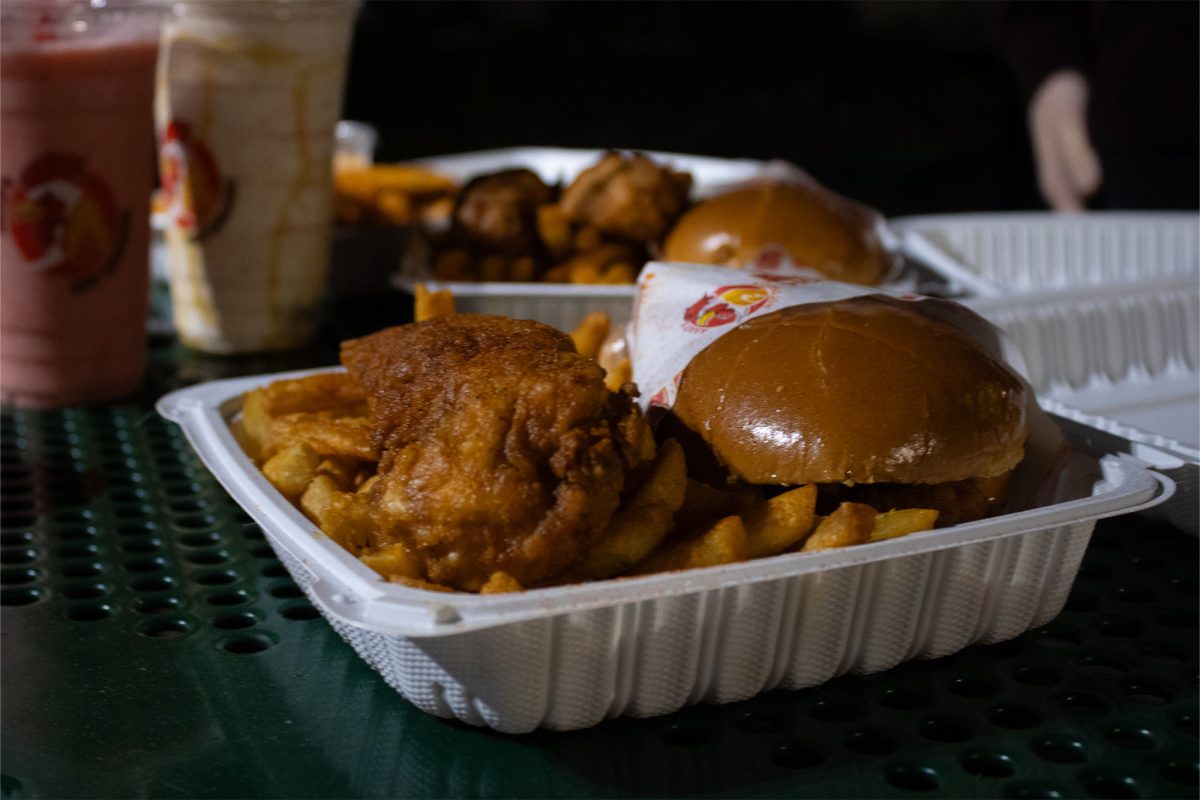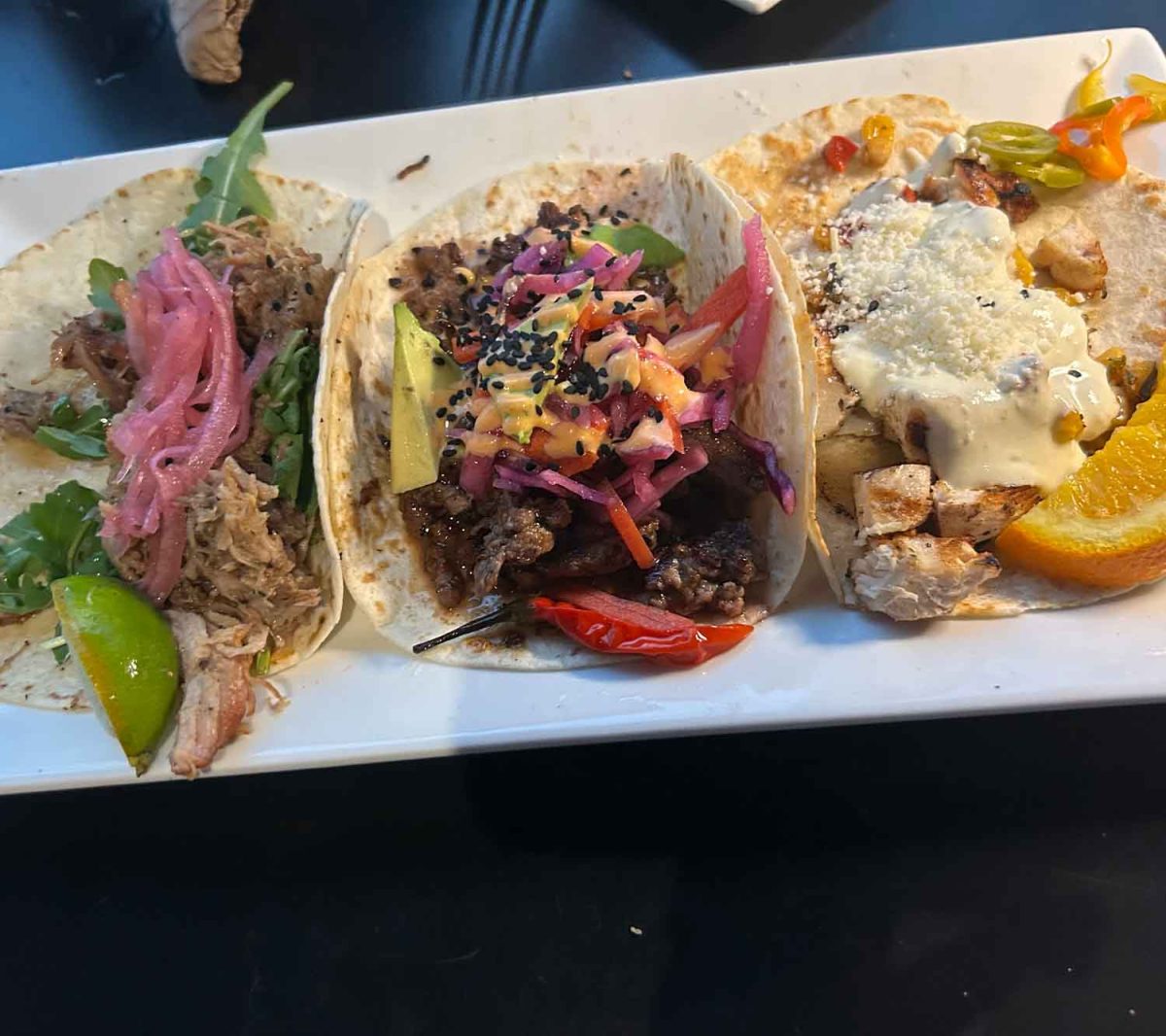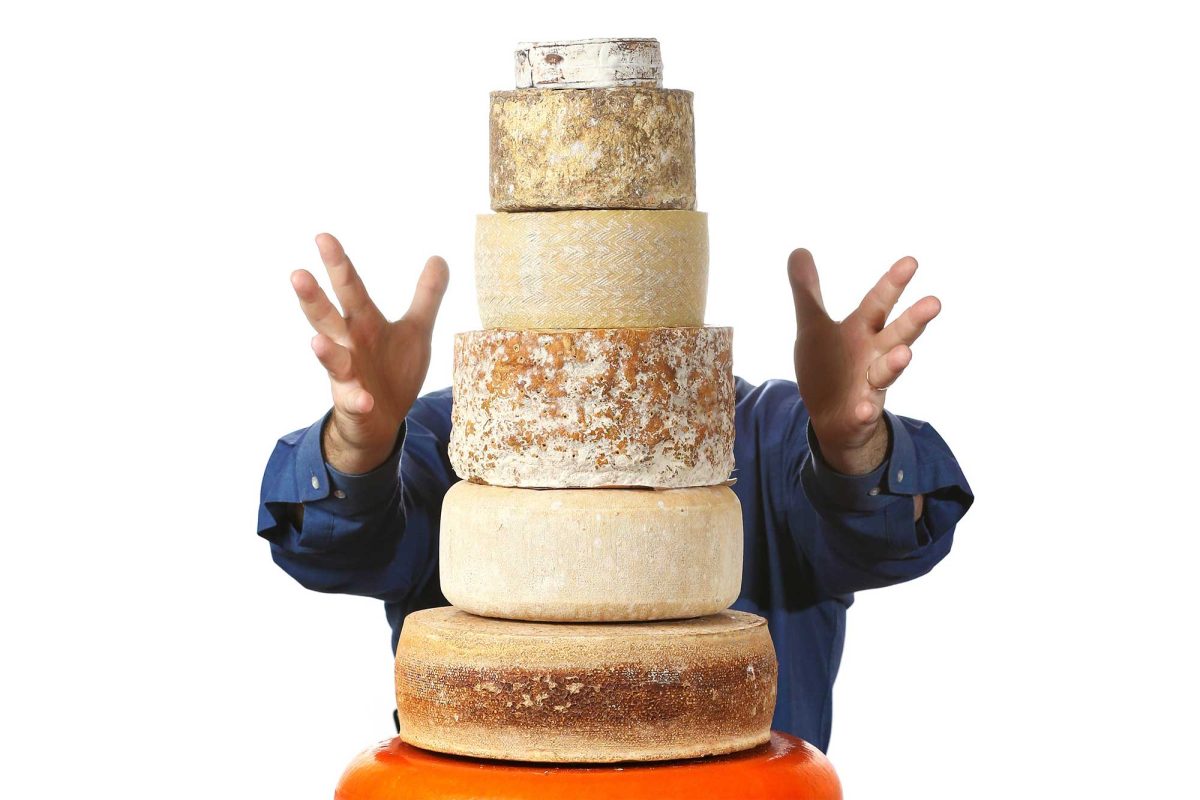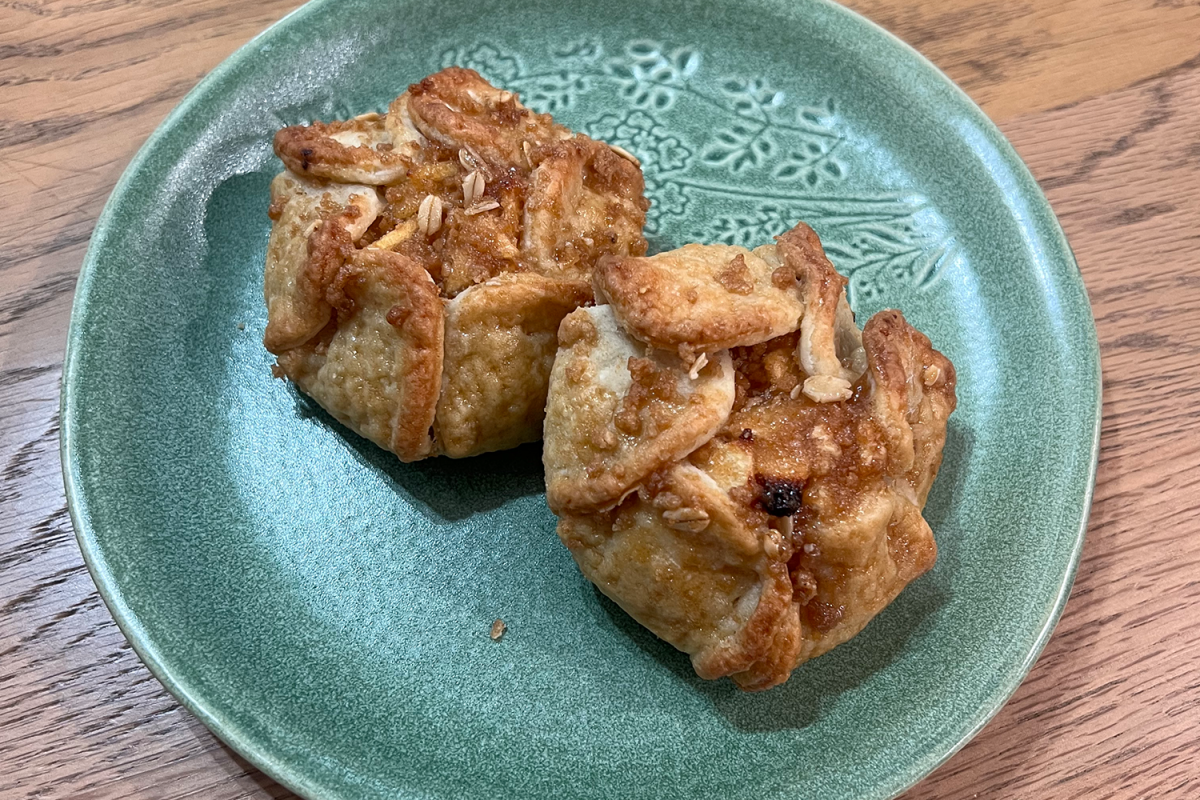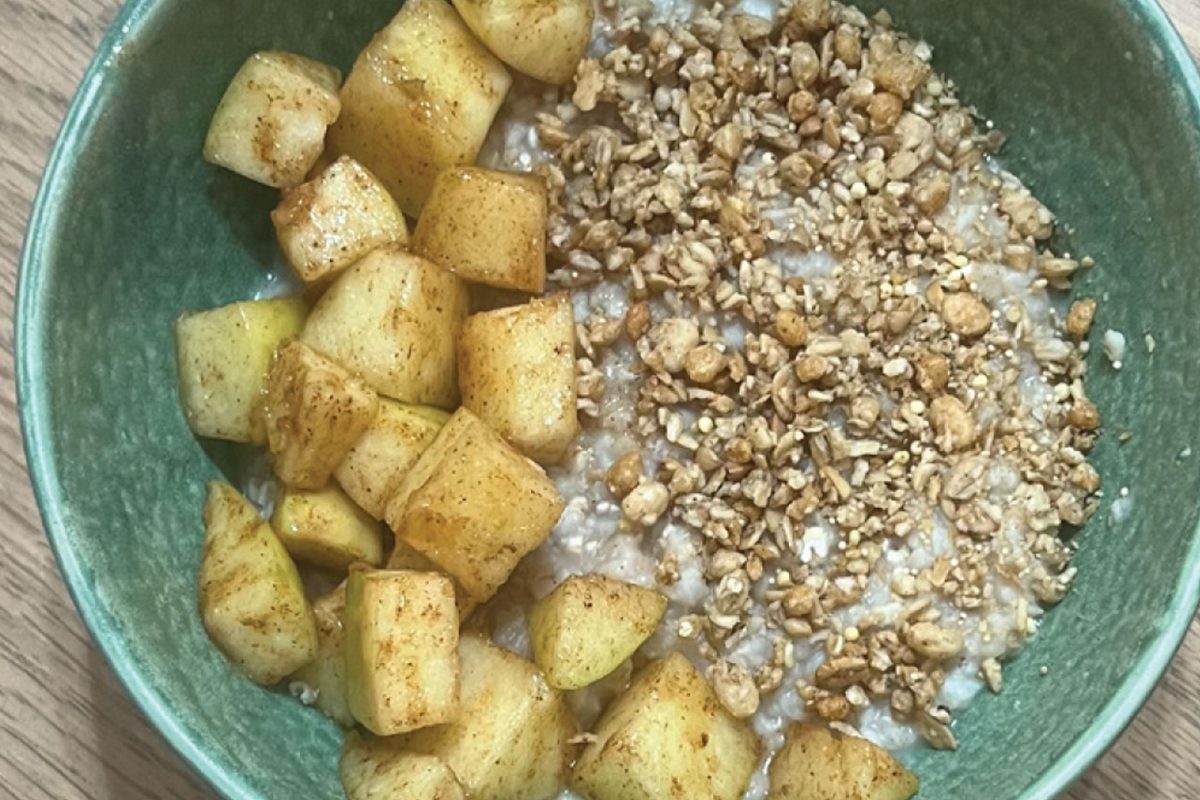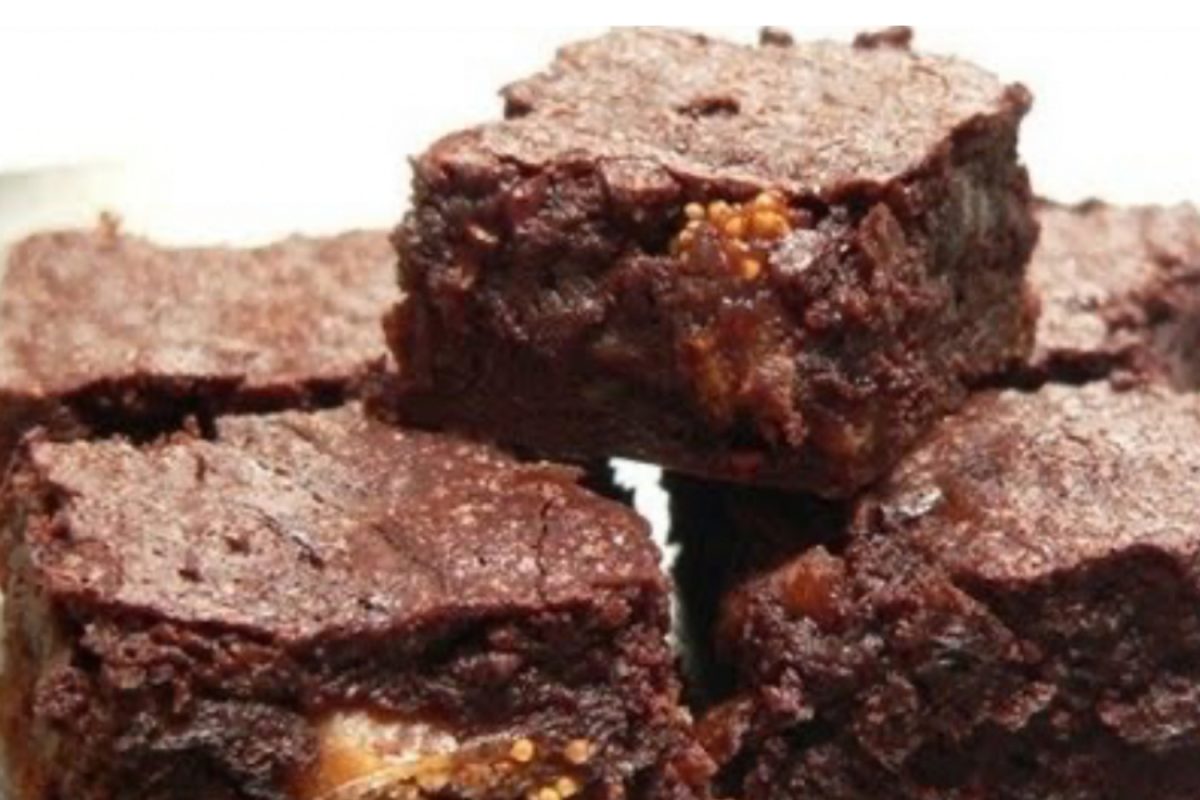Welcome back to the Cheese Corner. While we legally aren’t allowed to try Cotswold cheese with alcohol, we can still learn about and enjoy this delightful orange-ish English pub cheese.
A variation on England’s double Gloucester cheese made unique by its addition of onions and chives, Cotswold has a strong taste and aftertaste, making it feel like a more herbal and tangy but no less exquisite version of cheddar, although with a less firm texture.
Cotswold cheese’s base, double Gloucester, is made in England’s Gloucestershire region using full-cream milk from cows and vegetarian rennet. One of the primary features of the cheese, its orange coloring, is added through the coloring agent, annatto. Since as far back as the 16th century, the wives of English farmers have been making double Gloucester.
Further development would ensue in Gloucestershire and the Cotswolds region as herbs were added to create its distinct taste and speckled look. The particular variant I had came from Long Clawson, United Kingdom, where it is theorized that more cheddar was used in the development of the formula.
However, it differs from cheddar in its earlier ripening and creation process. Lower amounts of acids are used on the salted curds in pre-molding, causing it to take at least 24 hours, much longer than cheddar’s seven hours. The curds are distinct in that their salting occurs at a higher-than-average pH of around six. The entire process of the cheese’s creation lasts around five months.
Cotswold cheese is popular in England’s pubs, where patrons enjoy it with dark bread and some adult drinks. However, if you’re under 21, having it with bread or even crackers can make for an acceptable and legal alternative.
The Cotswold, produced from Long Clawson and sold at the Swarthmore Co-op, provides a distinct taste that, as long as you like onions, I could not recommend enough.






